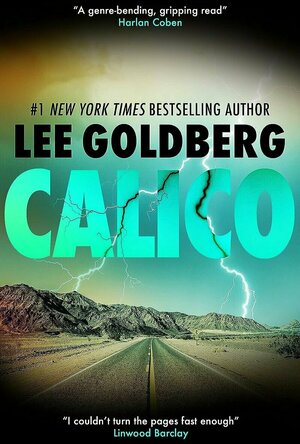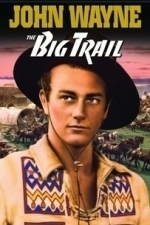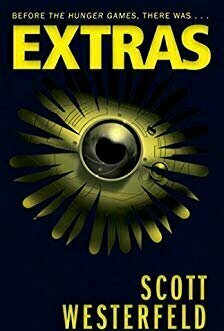Mark @ Carstairs Considers (2460 KP) rated Calico in Books
Nov 9, 2023
Since I normally enjoy Lee Goldberg’s books, I picked this one up without paying much attention to anything about it. As a result, I wasn’t aware it was a blend of Police Procedural, Science Fiction, and Western. It was initially shocking when I realized where the book was going, but then I got caught up in the story, which unfolds in the present and the past. It helped that I grew to enjoy the characters, although the raw nature of the first chapter made it a little hard for me. This book definitely has more content than the cozies I typically read. However, the book tried to do too much. There’s a subplot that really doesn’t go anywhere, and some of the story set in the past gets summarized for us. Meanwhile, the last couple of chapters have a bit too much exposition for me. I appreciate the attempt to do something different, but the execution could have been better.
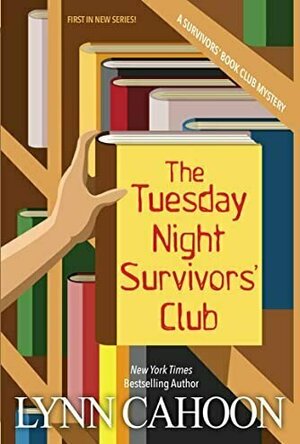
The Tuesday Night Survivors’ Club
Book
The New York Times bestelling author of the Tourist Trap mysteries launches a new series perfect for...
RəX Regent (349 KP) rated The Big Trail (1930) in Movies
Feb 19, 2019
And The Big Trail is where it really begins for Wayne, but this 1930’s classic was a box office failure, coming not only at the dawn of sound film, but at the time of The Great Depression. It would be another decade by the time “The Duke” wold be born and John Wayne would take his crown as the western superstar which we all know today.
But The Big Trail, originally entitled The Oregon Trail, is not really a John Wayne vehicle. He was a relative unknown actor alongside stage talent, many of whom were drafted into Hollywood at this time simply because they could give a decent vocal performance, as many a silent star was falling, failing to adapt the talkies.
But again, sound is not the selling point of this movie. This was one of a handful of films which pioneered the 70mm film format, in this case, Fox Grandeur, or Grandeur 70. A none anamorphic widescreen format, which whilst not the first attempt, nor the first 70mm film format, it was the nearest to which would succeed later.
2oth Century Fox would change cinema in 1953 with the release of the first CinemaScope film, The Robe, a year after the debut of Cinerama, but Grandeur more closest resembles Todd AO, a format which is still technically used today though in a somewhat different way. The secret to CinemaScope’s later success was in many ways the reason for the failure of Grandeur and that was the fact that CinemaScope was an anamorphic process, screening the image from a regular 35mm film and expanding with the lens, therefore making it a lot cheaper to adapt existing projectors and auditoriums.
Grandeur on the other hand was a larger film format and required a complete upgrade to theatres and therefore, especially at the dawn of the depression era, was financially untenable. Only two theatres in the U.S. would ever show this film in its widescreen glory, with rest showing the alternate 35mm Academy version.
And this film, had SIX versions shot simultaneously, in four different languages, 35mm and 70mm, each requiring different takes with different cameras or casts. This was an incredible feet but one which would soon be reduced with the use of audio dubbing, subtitles and ability to pan and scan.
The problem with this film is simple. It has a loose plot but no real twists and turns. This is almost a documentary following the wagon train trail across the west as group of pioneers make their way to the better life and building the United States, or at least personifying the romantic version of it.
But the film’s pacing and visual style works best through the widescreen lens, a beautiful journey with the untamed west as backdrop, but this is not the the version that most people have seen. The majority only saw the 35mm version which is 20 minutes shorter, edited more quickly and simply doesn’t have the visual flare of the Grandeur version. And without this vast visual canvas, the thousands of extras and props are almost cut from the film, a film with now feels a bit pointless and bit wayward.
Starring an unknown, though despite his hammy acting, Wayne manages to hold his own, the pacing is rushed and the fact that this is an epic journey which we are embarking on with them is somewhat lost.
The widescreen version’s main failing is the sound, which is inferior and poorly mixed in comparison to the 35mm cut, which is crisper and louder, but sound was never going to this movie’s strength and it was still rudimentary at this point. But on a visual level, considering the age of the print, the cinematography is up there as being some of the best, with scale and dare I say, “grandeur” about it.
This is an interesting film to watch now, though unless you are a strong western fan, I would say that it will not thrill, though as a peace of cinematic history, it is littered with footnotes and it very watchable.

Read by QxMD
Medical
App
'Read by QxMD' provides a single place to keep up with new medical & scientific research, read...

Gehry in Sydney: The Dr Chau Chak Wing Building, UTS
Book
Frank O Gehry, one of the most influential architects of his generation, is famous for many iconic...

Real Guns & Games - Master Collection
Lifestyle and Entertainment
App
Recommend by Rewind 2010 : Rewind iPhone Apps in the Appstore!* 50% HOT SALE - In app purchase....
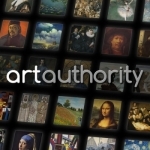
Art Authority for iPad
Art & Design, Education and Reference
App
"Best iPad Reference App" -- App Store editorial team. Art Authority for iPad transports you to an...

4WD Maps | Hema Australia Offline Topo Maps
Navigation and Travel
App
Offline 4WD maps for exploring Australia using your iPhone or iPad without an Internet connection. ...
Rachel King (13 KP) rated Extras (Uglies, #4) in Books
Feb 11, 2019
I did find the resolution that the Extras came up with regarding the protection of the wild to be a bit far-fetched and lacking detail and explanation - it takes much, much more to train for life in outer space than just floating around on zero-gravity attachments. The lightness with which this topic is approached in the novel does not do it justice by any means, but I had to remind myself that this is still a Young Adult novel. At the same time, this concept opens up a whole new plotline that Westerfeld could pursue in the Ugly series, should he want to, which I do appreciate.
